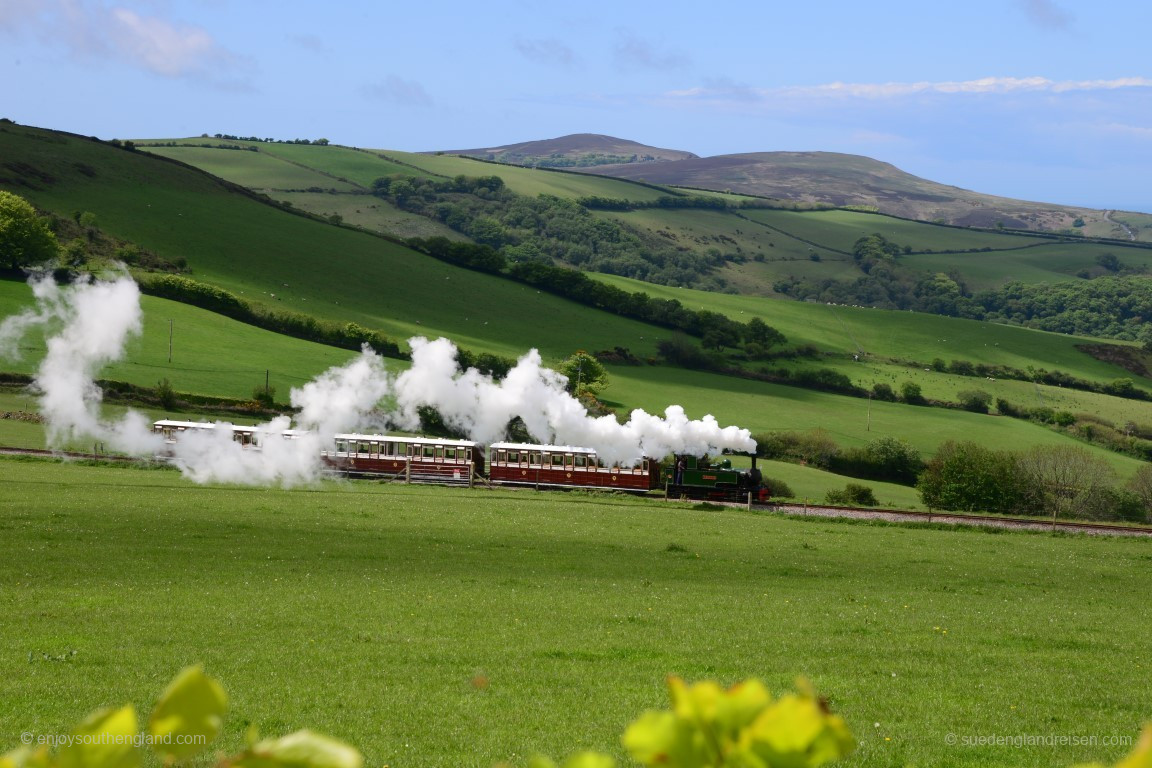
The Lynton & Barnstaple Railway en route in the rolling hills of Exmoor
England is famously full of small and exciting railways – a certain eccentricity of the British leads to a very lively scene and to railways which are run with a lot of enthusiasm. On this website we already have the “Romney, Hythe & Dymchurch Railway” (the “big sister” of the Vienna Liliput Railway), the “Kent & East Sussex Railway” or the “Island Line” of the Isle of Wight. This time we want to look at a very small company with big plans: the “Lynton & Barnstaple Railway” in Exmoor National Park. In the north of Devon, Exmoor joins the Bristol Channel and here is the twin town of Lynton/Lynmouth with its water-powered inclined lift.
Opened relatively late in 1898, the original L&B Railway connected the town of Barnstaple to the national railway network for more than 31 kilometres with Lynton/Lynmouth, which was already heavily visited by tourists at the time. As a special feature, the track was narrow-tracked with 597 mm (1 ft 11 1/2 in) and had many curves to overcome considerable height differences in Exmoor, which is very hilly. The total journey time was one and a half hours.
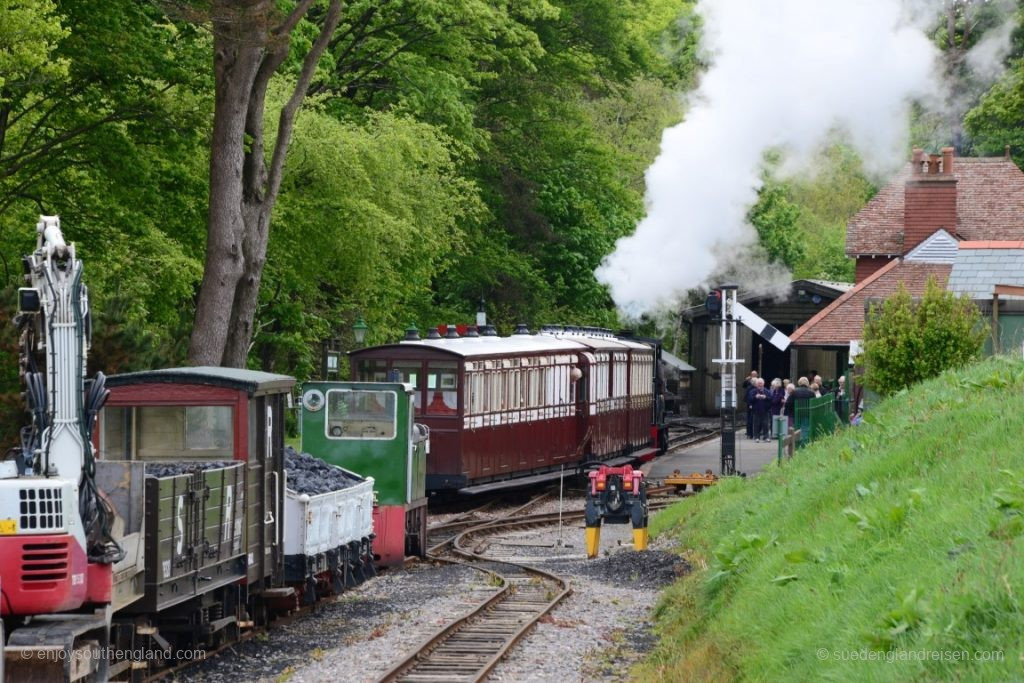
Lynton & Barnstaple Railway today – Woody Bay Operations Centre.
The poor economic situation after the end of the First World War meant that the railway was simply no longer operable. So it happened that on September 29th 1935, the last train ran after less than forty years in operation. The dismantling of the line was started immediately and the equipment which was not needed elsewhere as well as the narrow-gauge vehicles were simply scrapped or, at best, used as a garden shed.
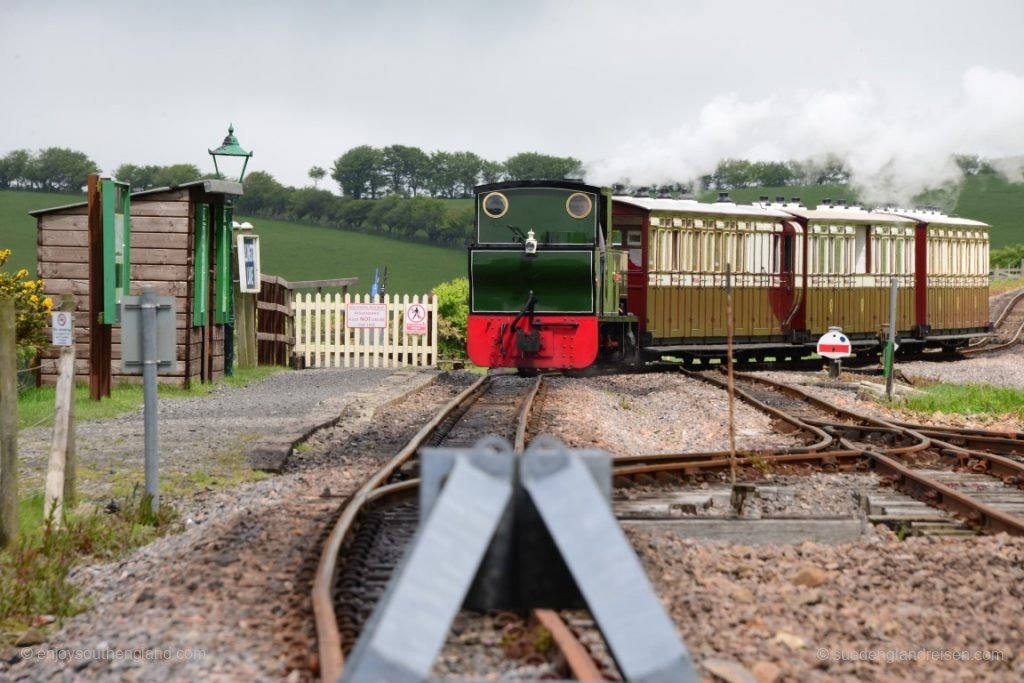
A Lynton & Barnstaple Railway train arriving at Killington Road station.
Miraculously, however, it was not the end of this scenic route. Nearly seventy years after the closure of the operation, railway enthusiasts have reopened a small part of the 1-mile (about 1.6 km) line, between the new Woody Bay hub near Lynton and the temporary Killington Lane terminus. The latter is just simply the end of the route in the middle of nowhere but connection will soon take the form of a 6.5-kilometre extension here. There’s more about this below.
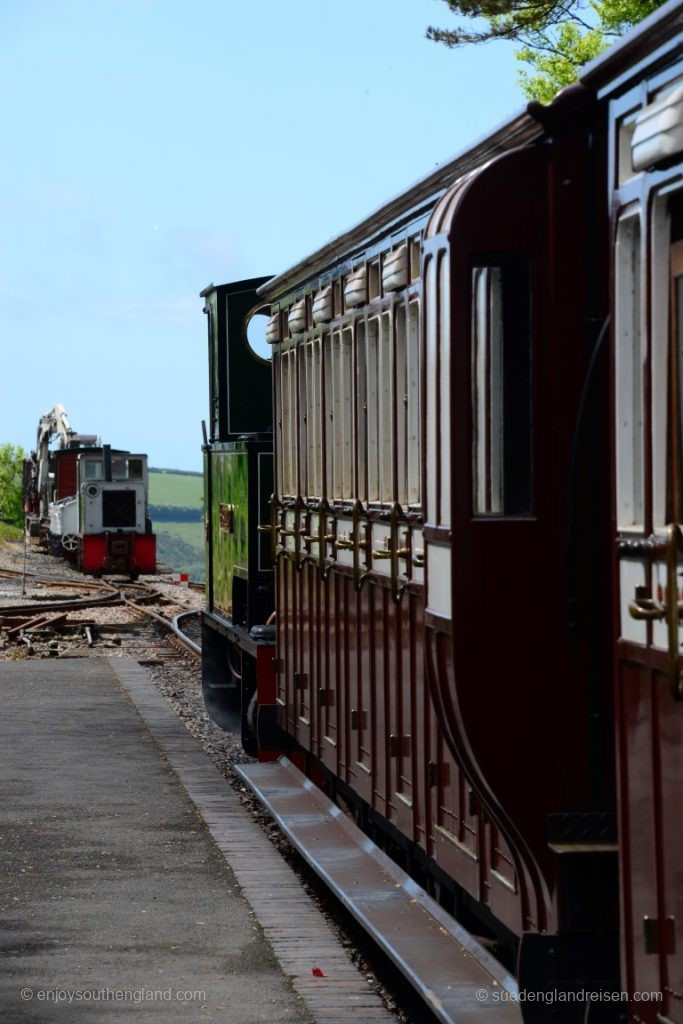
Lynton & Barnstaple Railway (Devon)

In this content we use affiliate links. This means if you click the link and make a purchase on the landing page, we will earn an affiliate commission at no additional cost to you. That helps us to offset the costs of running this website. Thanks so much for your support!
The current route has been used for 10 years as purely a tourist railway using diesel engines intermittently, but above all it has a daily steam train. The visitor will usually find his way by car to the station “Woody Bay” located on the main A39 road. The current operating centre is at the old station building with newly laid tracks and boiler house. In the station itself is the ticket sales kiosk with a souvenir shop, where, among other things, lovingly designed brochures fully document the old route and make you want to continue on the planned continuation. The volunteers are happy to tell the story of the railway and report on their current situation and plans. Our train, made up of replica vehicles, is ready at the platform and many open doors of the classic compartment wagons invite you to get in. Despite the small gauge, the compartments are very spacious and offer a very comfortable ambience for the unfortunately far too short journey of less than ten minutes each direction. It’s better to sit on the right towards Killington Lane, so you have the best view of a beautiful green landscape with gently undulating hills. In Killington Lane, the locomotive takes over and takes the train back to Woody Bay after stopping for a few minutes. Then it goes uphill a bit, so that it is possible to take great pictures showing a lot of steam.
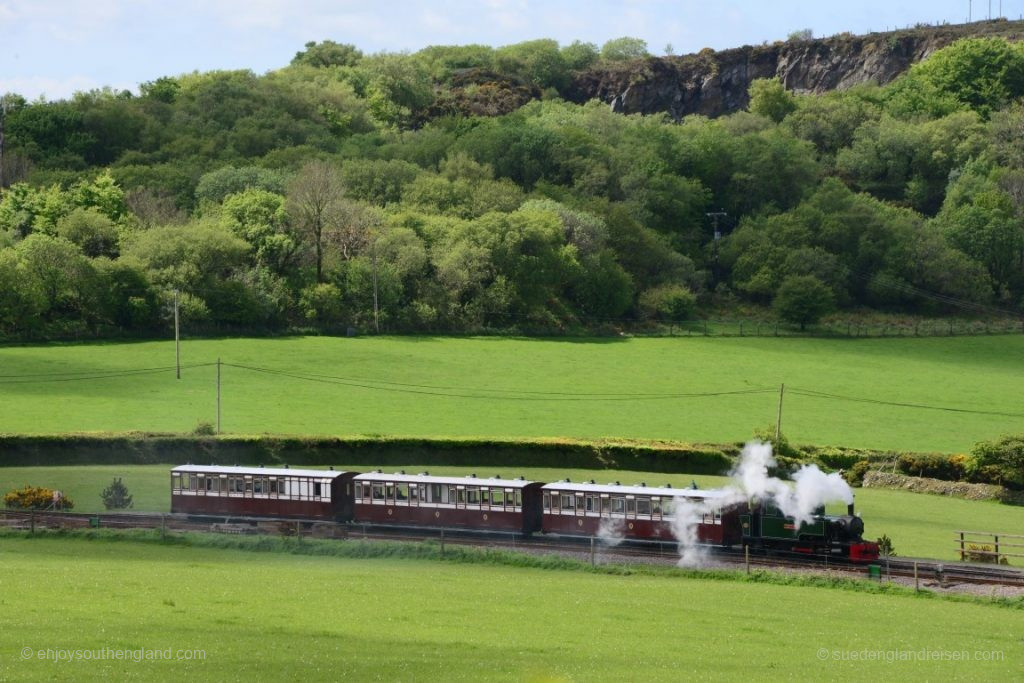
Lynton & Barnstaple Railway (Devon)
If you come to this beautiful corner of southern England, a visit to the Lynton & Barnstaple Railway is highly recommended. Even those who only want to take pictures, can thank the volunteers and the operating association with a donation. The money will go towards the planned enlargement, which is being worked on at full speed. The mighty Chelfham Viaduct has already been renovated and prepared for the laying of tracks. In the spring of 2015, plans for the expansion, estimated at around 15 million British pounds (currently around 18 million euros after the Brexit vote), were made public and formally applied to the authorities for approval at the beginning of 2016. Unfortunately, decisions on this have not yet been taken at the time of this article, but are expected shortly.
More information about the association, the route and the plans can be found at www.lynton-rail.co.uk.
When you are so close to Lynton don’t miss a visit to the spectacular “Lynton & Lynmouth Cliff Railway“!
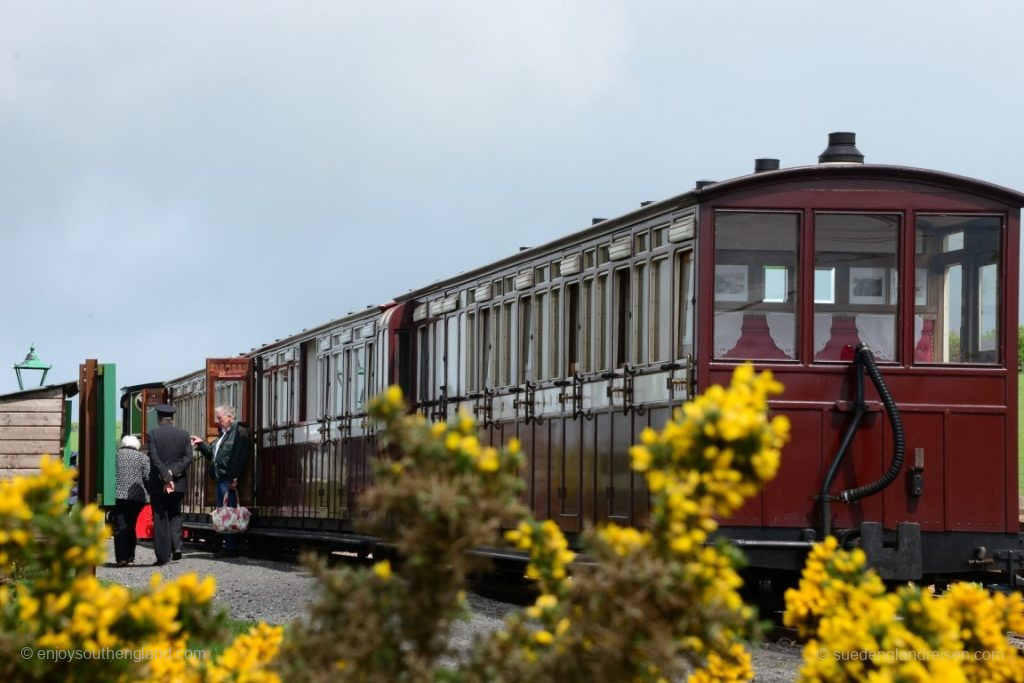
This is southern England: bright yellow gorse and historic railways form a beautiful symbiosis (Terminus of the Lynton & Barnstable Railway)
Finally, a very rare find: A video of the operation of the original railway from about 1935:
For comparison, a video of the operation in 2016:

In this content we use affiliate links. This means if you click the link and make a purchase on the landing page, we will earn an affiliate commission at no additional cost to you. That helps us to offset the costs of running this website. Thanks so much for your support!





